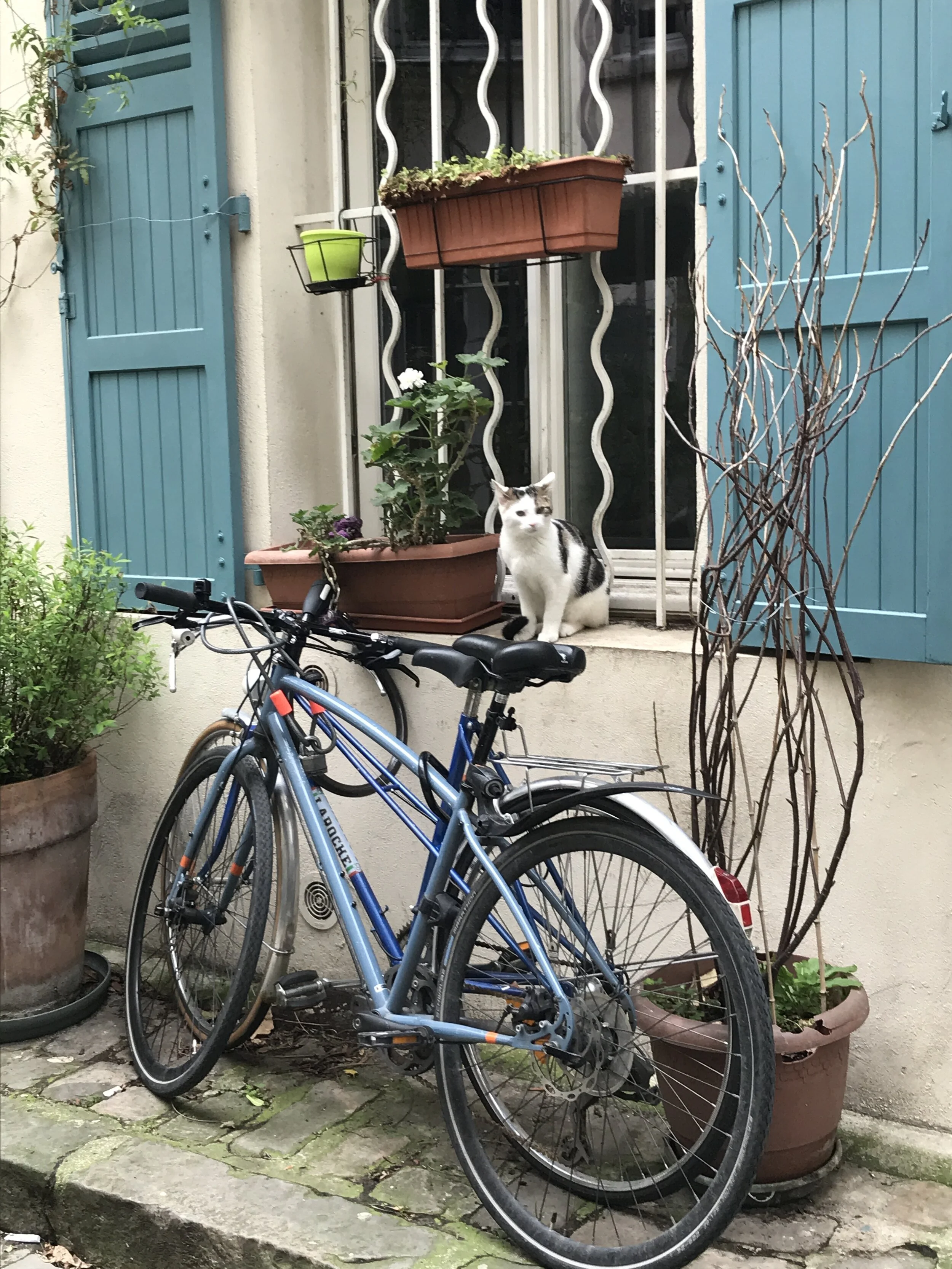A little background. I went to Mount Holyoke College, one of the original Seven Sisters colleges, a bucolic campus nestled in western Massachusetts. For me, Mount Holyoke was the place where seeds were planted, and seeds take time to grow. The seeds that grew in me—curiosity, reflection, passion; even writing—have been my means of travel to get where I am. Recently, the Mount Holyoke European Alumnae Council put out a call for photos. We were asked to submit up to three photos, then a fourth, each with a title and backstory of 150 words or less, which I did, from these photos. Today, my life is filled with Paris: It captures my thoughts and flows from my pen and camera. How it happened can be traced to that lush campus all those years ago.
My Paris Teacher
I am a writer rather than a photographer, someone who creates images with words. Then I began spending time in Paris. Paris taught me to see, to understand the difference between looking and seeing. Not only did I find my written voice, but I began taking photos, capturing moments I didn’t trust my mind’s eye to remember. And that’s when I discovered that when you take a photo, you don’t really know what you have until afterwards. I was preparing a new itinerary when, as so often happens as I wander Paris, I turned a corner and came upon something wonderful. The steps are the clue that this tiny, colorful passageway is Montmartre. But it wasn’t until I looked at the photograph afterwards that I saw the man, mid-stride, who’d turned to look at me.
Bicycle Memories
For four years, I had a bicycle in college. A yellow one. I bought it, used, as a freshman and sold it, well-loved, as a senior. I loved that bike, but it took a little while. Freshman year, wet October leaves covered the narrow path sloping toward the building ablaze with red ivy where my philosophy class met. The bike skidded, I fell. I don’t remember anything about philosophy, but I remember the wave of homesickness that washed over me as I brushed myself off, more embarrassed than hurt. Who knows how memories are made and which ones are destined to bubble up. The large outer arrondissements of Paris are filled with secret villages and peaceful passageways, vestiges of the working-class family communities that didn’t become part of the city until the mid-19th century. There are no tourists in the 15th arrondissement where ordinary Parisians live. Just bicycles and cats, and memories.
Pleine lune sur le Marais (Full Moon over the Marais)
The first time I saw Paris it took my breath away. For two glorious weeks I remember each morning feeling like I was waking up on a movie set. That feeling has never changed. I love to walk the city at night when all is quiet. You can see things you don’t see in daylight; you can dream. Around six in the evening two days after the fire at Notre-Dame, I crossed the Pont Louis Philippe to Île St.-Louis, walked down the Quai de Bourbon to Pont de la Tournelle, crossed to the left bank, and continued on to Square René Viviani. Hundreds of people stood in stunned silence gazing west into the sun at the gutted cathedral. I ate bo bún at a tiny Vietnamese kitchen and tried to absorb it all. Later that night, a full moon hung over an empty street that looked like a movie set.
Se mettre sur son trente et un (Dressing Up)
Whenever my mother got ready to go anywhere, she’d say she was going to put on her face. As a little girl, I had no idea what that meant. Now I understand. For sheer facial perfection, for an absolute symmetry of features, the young Grace Kelly in Hitchcock’s Rear Window is hard to beat. She’s mesmerizing, in spite of her symmetrical perfection. I say “in spite of” because symmetry can cut both ways. From the cardo maximus of the Romans to the broad boulevards of the 19th century, from Place des Vosges to the Eiffel Tower, Paris is symmetrical. Yet, what would Paris be like if Haussmann had not left some pockets of narrow, winding streets untouched? In real life, there is peeling paint, things are askew, and what some call graffiti is, in Paris, street art. This is Paris, without her face on. Mesmerizing.
Homage to Vivian Maier
I knew the extraordinary story of Vivian Maier, the American street photographer whose posthumous fame was pure serendipity. So when a tiny gallery in Paris’s 10th arrondissement held a show, I hastened to see it. I was unnerved. A small “B,” the former logo for Bloomingdales, in a 1954 photo of Lexington Avenue brought memories of my own childhood in New York in the fifties. A kitchen counter still life with an old family photograph made me wonder how I would’ve felt had my nanny photographed personal things around my Chicago house. While I took as coincidence our timing overlap in New York and Chicago, that one of the children in her care bore the same uncommon name as mine—Lane—astonished me. Many of the self-portraits, like Chicago Waterfront (1956), are silhouettes of the photographer, her features swallowed by shadow: a woman invisible in plain sight. One night, I walked home along the Quai de la Tournelle. Everything about this photo found me. All I did was look down.





